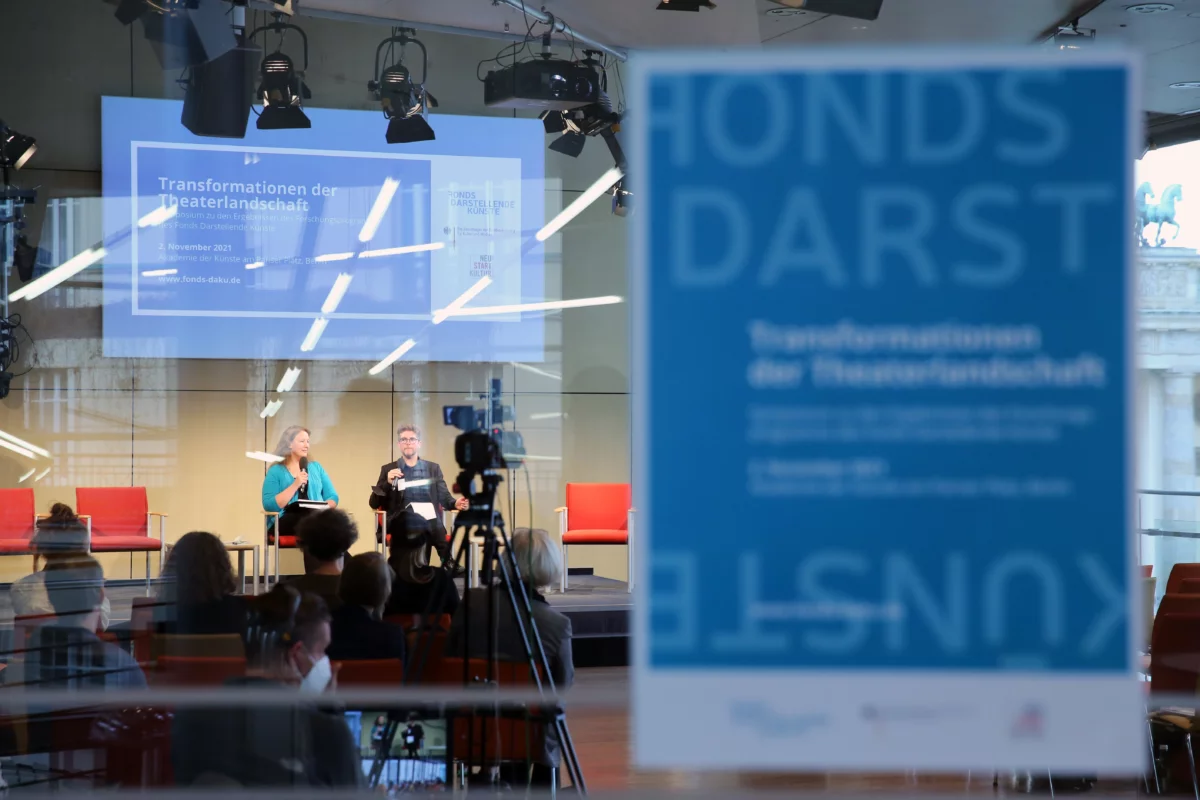Empowerment for the arts
By Georg Kasch
The symposium "Transformationen der Theaterlandschaft" (The Changing World of Theater) provides important ideas on how the independent performing arts should work after corona.
Can anything be learned from the corona crisis and its management? In regard to the independent performing arts, that is certainly the case, as became clear at the symposium "Transformationen der Theaterlandschaft." The results of the research program that monitored the Fonds Darstellende Künste’s NEUSTART-KULTUR funding were presented there. The funding was distributed in the form of #TakeThat programs for artists, groups and venues that are part of the independent scene. In the twelve sub-studies, the eleven researchers took part in the Fund's research program. At the symposium, they were asked to present recommendations for action so that, in the end, the money does more than just rescue the scene. At best, it’s about transformation.
Transformation was one of the most mentioned words of the day at the symposium. As in many other areas, the corona pandemic has acted as a magnifying glass in the case of the independent performing arts, showing what's wrong and, importantly, how vulnerable the arts scene is.
Accordingly, many proposals aimed to make the independent performing arts more resilient. The fact that project funding, currently the predominant means of funding, often falls short because it only targets the product and ignores the process became very clear during the lockdowns. The broad lines of a different funding logic, drawn up by Aron Weigl in his sub-study, look like this: less ‘funding jungle’ and clearer funding structures. Still, the application process alone is often an art in itself. Grants are necessary, so that in-depth research into a topic can be a priority in itself. Multi-year formats would provide more planning security and continuity. Support for developing talent is needed too.
In their presentations, Philipp Schulte and Kai van Eikels (with Laura Pföhler and Christoph Wirth) showed how important both multi-year funding and the enabling of collaborations are. Schulte stated that artistic practice needs more time and space. Often premieres are merely a kind of spin-off from the long-term research that artists are working on. This research must be appreciated and promoted, he said. Van Eikels, who developed a new concept of what ‘live’ is, based on formats created during lockdown, called for collective processes to be promoted, for groups to collaborate more closely with one another and for participants to be able to benefit from the expertise gained by others.
Especially given that networks – as Veronika Darian (with Melanie Gruß and Verena Sodhi) explains – also form a kind of artistic-social safety net and can represent a form of empowerment for artists. In order for them to be able to develop collaborative skills, this would have to be promoted at art colleges, for example, where competitive pressure still reigns at the moment.
 © Foto: Dorothea Tuch
© Foto: Dorothea Tuch
Also on the agenda is a kind of basic income beyond Hartz IV, a recognition of life and work performance, security for old-age. This became clear in the results of the studies led by Thomas Schmidt. His visual presentation of current funding contexts, which is more reminiscent of a many-headed hydra than of desperately needed funding architecture, was impressive. His proposals for reform represent something of a revolution for the funding institutions themselves, because Schmidt proposes a radical redistribution of funds to new, centralized institutions (such as an investment bank based on the KfW model).
There would also be changes for the artists because the system outlined raises many questions, such as who defines who is recognized as an artist. Especially since the demand for an increase in funding for the independent scene of 15 percent (to 450 million euros) by 2032 and of 30 percent (to 900 million euros) by 2048 is likely to result in competition with the municipal and state theaters.
Schmidt's study results, as became clear in the break discussions, are the most controversial of the symposium, but also contain a lot of food for thought. It is clear that what is really needed is a coordinated, interlocking funding architecture in which what is offered by municipalities, states and the federal government complement each other logically. And – another repeated demand – the municipalities must be put in a financial position to contribute their share of the funding without having to close a daycare center.
The federal government has provided a lot of money for NEUSTART KULTUR. This was not without controversy, if only because of Article 30 of the Basic Law, which places cultural sovereignty with the federal states. Julius Heinecke (with co-author Johanna Kraft) showed under which circumstances the federal government could continue to get involved: for example, regarding topics that have nationwide or international relevance, encompassing cultural heritage or even future areas such as artificial intelligence, but also for projects and artists in rural areas. Heinecke emphasized how important it is to involve the entire population, especially when funding projects with nationwide relevance.
Two of his – extremely sensible – demands are that culture should be transformed from a voluntary service into a mandatory task, thus making culture a cross-sectional task in all departments of a future federal government and, as a result, ensuring it would be considered in both the economic and social spheres. This would then really amount to a complete change of perspective and would probably have more effect than – see Thomas Schmidt – designing a new, centralized and, at the same time, bureaucratized system. Then the arts would really be part of society’s core. They would also be armed against the next pandemic.